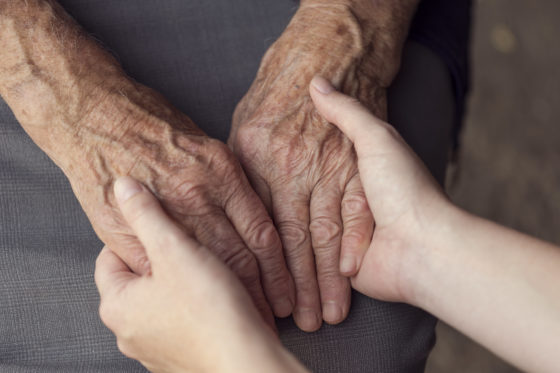Point-of-care risk assessment helps health care assistants better address residents’ emotional distress and creates safer workplaces.

Photo credit: iStock.com/vladans
More than 32,000 people in B.C. work as health care assistants, resident care assistants, community health workers, and home care workers. Their care is essential for patients with dementia, physical mobility challenges, and other health needs.
Sadly, these support workers often face a risk of violence from the people they care for. Violence can be intentional or unintentional and can happen when patients are feeling emotional distress, experiencing illnesses such as dementia, reacting to medications, struggling to communicate, or for many other reasons. Violence is the second-biggest hazard to care workers after musculoskeletal injuries from lifting, pulling, and pushing patients. (See this 2017 story in the Vancouver Sun about how these front-line caregivers have the highest workplace injury rate in B.C.)
“What’s going on in my surroundings?”
To find out more about improving safety for these workers who do such important jobs, I spoke with Denise Subotin, a manager in WorkSafeBC’s Industry & Labour Services. Denise told me about an injury prevention method that’s helping workers stay safe when they’re working with residents. It’s known as point-of-care risk assessment.
Says Denise: “Basically it’s about assessing your surroundings and the task you are trying to accomplish to determine if it’s safe to proceed. It’s a methodology for approaching a patient, but you could actually adapt it for any task or interaction in the workplace or daily life.”
Point-of-care risk assessments are to be carried out before starting the task and while providing care. Using this practice, workers ask themselves a series of questions about four aspects of a situation, including:
- The person in care: Are they receptive? Do they understand what I’m talking about? Is there a change in behaviour?
- The environment: Is there anything that might interfere with my task? Do I have a safe exit? Can I get help easily?
- The task: Do I have everything I need to do this? Does it need to happen right now?
- Myself: Am I in a hurry? Do I feel comfortable? Do I need help?
This approach is also one of many encouraged by SafeCareBC, the health and safety association for continuing care workers. For more information about this strategy and others, see their page on Violence Risk Assessment.
Denise adds that if at any point a worker believes it’s not safe to continue, the worker should stop, communicate with co-workers and a supervisor, and develop an alternative plan.
Changing the way people deliver care
I read about an Abbotsford care home that started serving food 24/7 rather than insisting on set meal times. I thought this was a good example of noticing a cause of reactive behaviours (making people get up for breakfast when they don’t want to, causing uncooperative behaviour) and finding a solution. It improves residents’ quality of life, which is important in its own right and also a big boost to caregivers’ workplace safety.
Said a care aide quoted in the story: “It’s become very common sense. It’s become looking at the resident as ourselves.”
For more about safety for health care assistants, see the Hearts and Hands Conference, an annual day of celebration and education for health care assistants, resident care assistants, community health workers, and home care workers.



Pingback: Agression et violence : nouveautés septembre 2018 – Coin de la documentaliste : la veille informationnelle de l'ASSTSAS